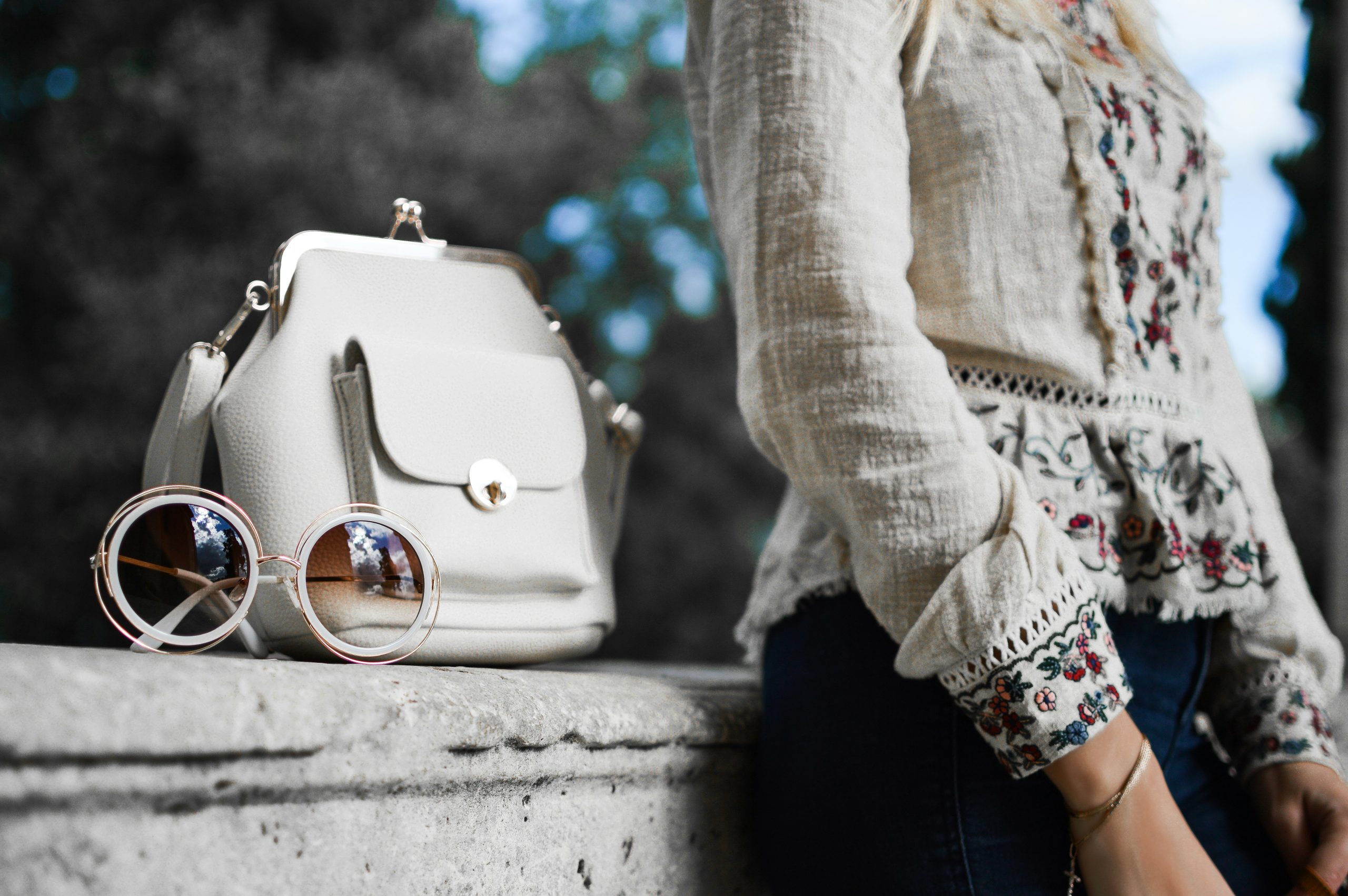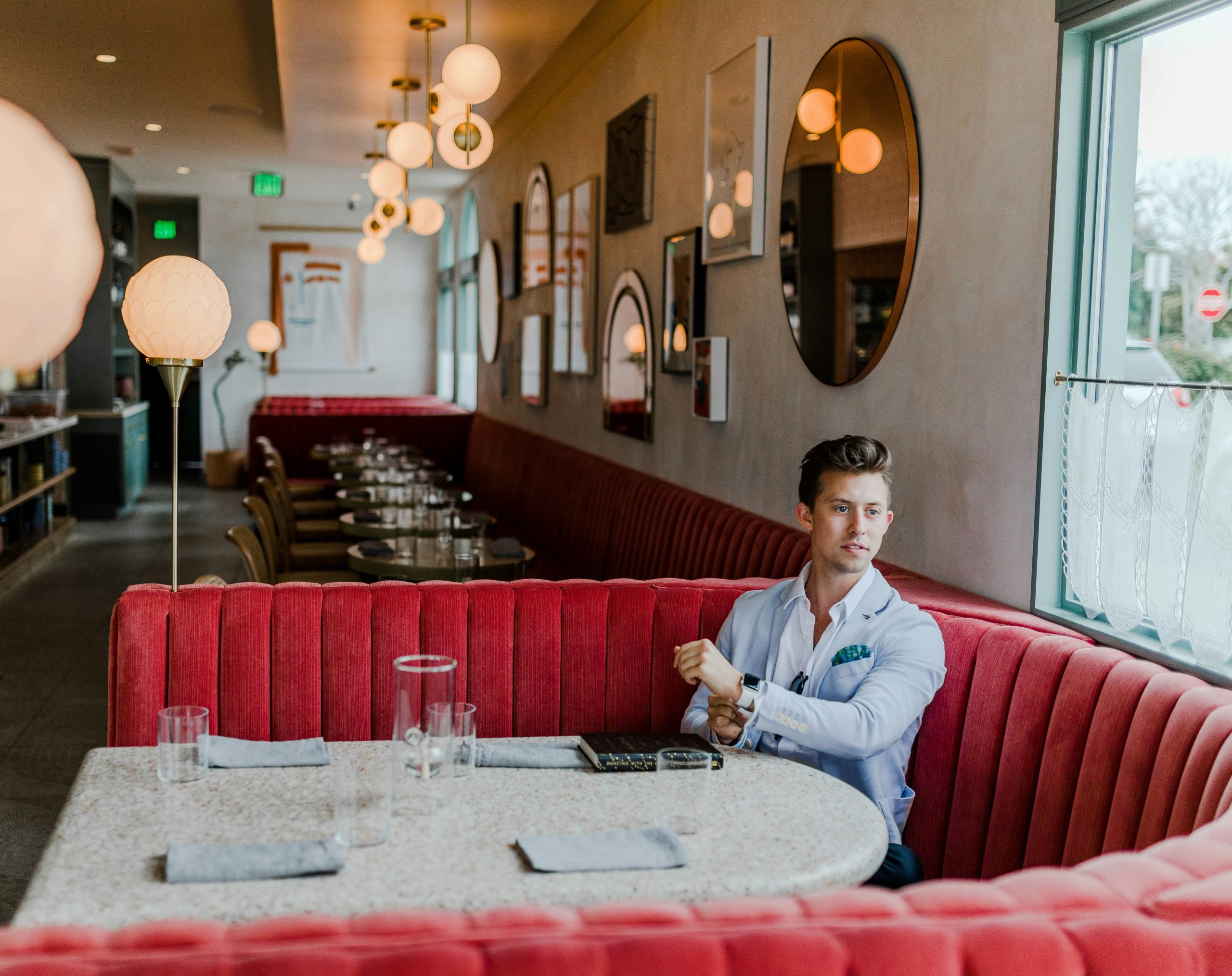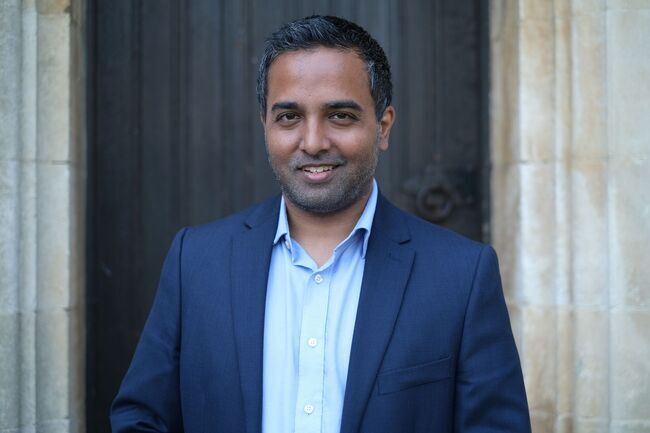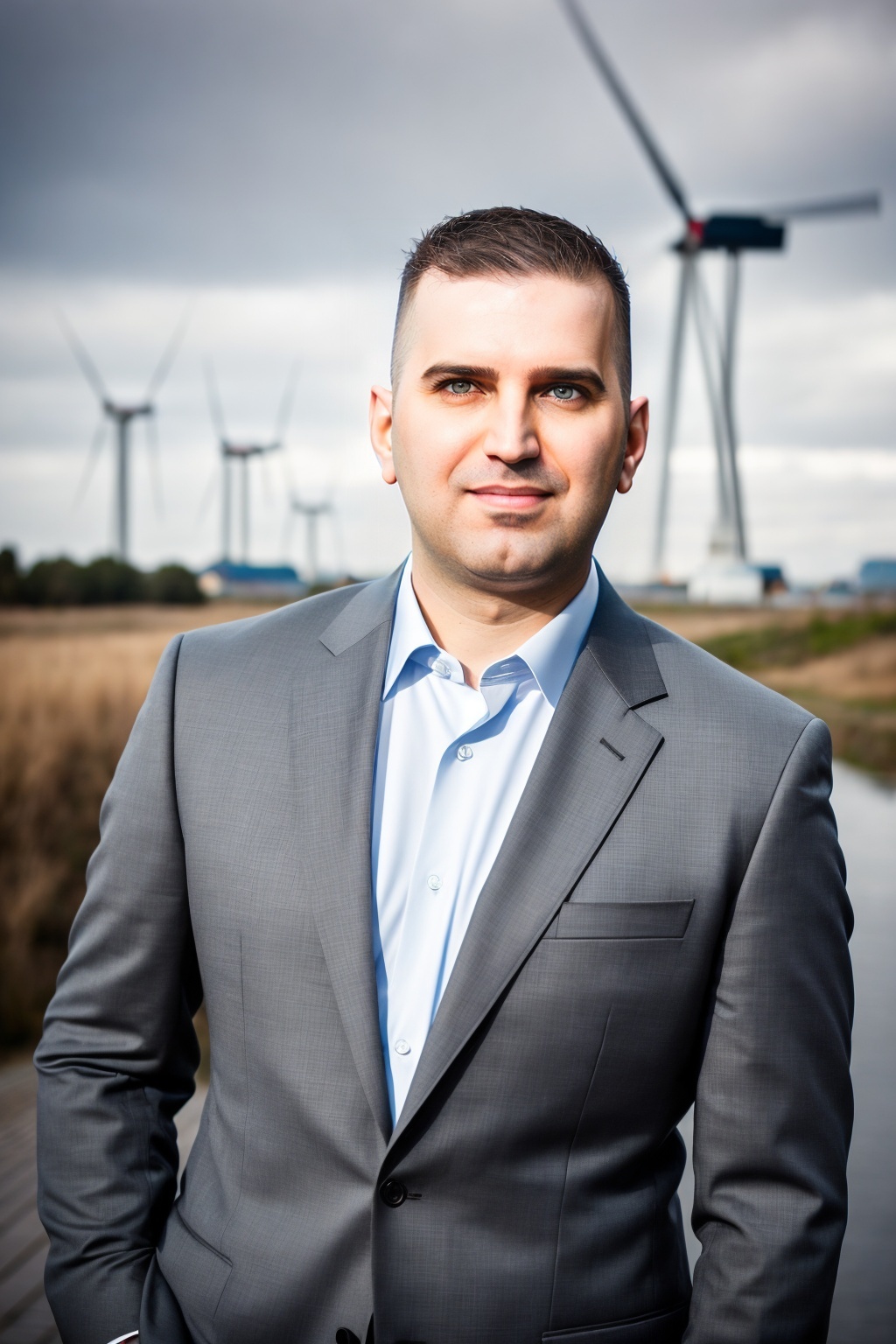Did you know AI could make fashion retailers 59% more profitable? Dave Antrobus, Co-Founder and Chief Technology Officer of Inc & Co, leads this change. He’s known for his role in UK retail innovation. Antrobus uses AI to blend fashion’s creativity with the power of data, creating new standards in the industry.
With Antrobus‘s guidance, Inc & Co changes the way fashion businesses work. The industry becomes not just more vibrant but also smarter in predicting trends and improving design methods. As a key player in fashion tech, Dave Antrobus is steering the UK’s fashion industry towards a tech-savvy future. He shows how AI can boost both the creative and practical sides of retail.
Introduction to Dave Antrobus and His Vision
Dave Antrobus is a rising star in the fashion world. He skillfully combines technology with digital fashion. His work is changing the industry through innovative AI applications.
His focus on digital fashion is crucial. It builds on traditional fashion while introducing new breakthroughs. Antrobus uses AI to make the fashion industry more creative and efficient. This enhances the UK’s role as a leader in innovation.
Dave Antrobus is dedicated to transforming fashion with digital tools. He uses advanced AI to push the industry’s limits. His vision keeps the UK at the cutting edge of global fashion innovation.
The Role of AI in Today’s Fashion Industry
Artificial intelligence is becoming key in modern fashion. It brings new ways to shop through customisation and trend prediction. AI helps in making the supply chain better too. Designers and shops can now meet individual tastes thanks to AI. It also makes predicting new fashion trends more accurate.
Meta’s AI Studio lets people make and share their AI characters. Brands like Brunello Cucinelli use AI for customer queries, handling up to 12,000 a day. Prada has seen a 17% revenue increase in the second quarter of 2024 through AI. This shows how much AI is changing retail.
AI aids in making fashion more sustainable by better inventory management. Meta’s Llama 3.1 model shows how AI drives retail forward. With AI, brands like Prada and Miu Miu grow in sales and attention. This proves AI’s role in expanding and engaging users in the luxury market.
AI offers creative ways to solve problems in fashion retail. It improves interactions on social media and logistical operations. Clearly, AI is reshaping the fashion industry in significant ways.
How Dave Antrobus is Revolutionising Fashion with AI
Dave Antrobus is leading a big change in fashion with AI. He uses advanced AI to make everything from design to sales better. This change meets the needs of today’s shoppers and changes old ways of doing things. It brings unmatched customisation and efficiency to the industry.
By creating smart algorithms, Dave Antrobus can predict fashion trends. He also makes sure that stock levels are just right and improves shopping for customers. His work challenges old methods and shows how AI can lead to big achievements in fashion. Dave Antrobus is dedicated to pushing the fashion industry forward. He sees AI as key to its development and success.
AI in Fashion: Benefits and Challenges
AI in the fashion industry brings many benefits, like predicting trends and reducing waste. By using AI, brands can see upcoming trends, make their supply chains efficient, and reduce unnecessary stock. This helps make their operations more eco-friendly. Still, using AI in fashion also presents challenges.
Dave Antrobus is at the forefront of tackling these challenges. One major issue is keeping customer data safe as cyber threats grow. There’s also a gap in digital skills among workers, making it hard to adopt new technologies smoothly. To counter this, Antrobus suggests thorough training programs to equip employees with the necessary skills to use AI effectively.
To integrate AI effectively, a well-planned strategy is needed. This means not just adding the right AI tools, but also building a culture open to change and innovation. By understanding both the benefits and challenges of AI, and focusing on smart integration, leaders like Dave Antrobus are creating a future. In this future, AI not only boosts efficiency but also pushes the fashion industry toward being more sustainable and focused on consumers.
Case Studies of AI Implementation in Fashion
One leading example in the fashion sector is Pinterest’s use of AI to better their adverts. In the second quarter of 2024, they saw a 21% revenue increase, reaching $854 million. This was due to shoppable video ads which led to more clicks and a lower cost per action for big sellers, compared to normal catalog ads. Such fashion innovation showcases the real benefits and impressive results from using AI.
Another key example is how AI has improved customer experiences through targeted offers. Studies show that 83% of customers like getting custom discounts, but only 44% think the offers they receive are relevant. AI helps brands offer more personal experiences, making customers happier. This makes customers more loyal by giving them what they want in a smarter way.
Looking at Gen Z, who love tech, shows AI’s big role in fashion. With 68% of them finding new things on social media, and 22% buying through it, the need for AI in social media is huge. This helps fashion brands use smart insights to sell more online to young shoppers.
AI also makes logistics and managing the supply chain better in fashion. It allows brands to use real-time data to smooth out operations, predict demand, and cut waste. With advanced AI, companies make their supply chains faster and more effective, boosting productivity and making customers happier.
These AI case studies show how AI changes the fashion industry for the better. They prove AI’s value in increasing sales, enhancing customer ties, and making operations smoother. These successes in technology implementation mark important advances in the industry.
The Future of AI and Fashion in the UK
Artificial intelligence (AI) and fashion in the UK are joining forces, creating a big change. This partnership pushes the fashion industry into new directions. Companies such as Meta are now focusing on AI. They’ve launched AI Studio with Llama 3.1 language model. This helps users make unique chatbots. It shows a growing interest in AI across various sectors in the UK.
AI Studio is available on Instagram and other platforms. It makes creating AI simpler for everyone. This could change how the UK fashion industry interacts with customers. As automation increases, communication becomes more efficient and personalised.
User-generated AI can be used in food, travel, and fitness too. This shows a big opportunity for AI in the UK fashion world. It’s important to use AI well to keep the UK at the forefront of fashion innovation.
Meta’s AI is uniting Facebook, Instagram, Messenger, and WhatsApp. This matches the UK’s interest in easy digital chats. Such a strategy could make shopping in fashion more engaging. AI is becoming crucial for the growth of the fashion industry.
Dave Antrobus and other leaders are pushing these new ideas. The future of UK fashion relies on overcoming ethical and practical problems. Solving these issues will ensure that AI’s growth is positive and lasting. The UK aims to set global standards, leading in fashion and technology.
The Technical Side of AI in Fashion
The fashion industry is evolving thanks to AI technology. Designers and brands now use intelligent tools to understand consumer data. This leads to insights about what people like and market trends.
Smart algorithms help make the supply chain more efficient. They predict what customers want, manage stock, and ensure products arrive on time. This reduces waste and boosts efficiency. For instance, Brunello Cucinelli’s AI site, Solomei.AI, solves up to 12,000 questions every day, showing AI’s impact.
Brands like Prada have seen great results from using AI technology. Their revenue grew by 17% in the second quarter of 2024. The growth was thanks to their Arcadie and Wander bags becoming hits. This shows how using data can help set trends and attract customers.
Smart algorithms also make shopping more personal. AI tools, like what Meta offers, let brands create AI characters for fashion advice. Brands use these tools on social media and websites to improve how they interact with customers. This makes customers happier and more engaged.
To sum it up, AI technology, fashion analytics, and smart algorithms are changing fashion for the better. They help brands stay current and improve how they operate.
Dave Antrobus’ Collaborations and Partnerships
Dave Antrobus knows how important teaming up is in the AI fashion world. He works with experts, tech firms, and fashion brands to bring new ideas to life. This teamwork leads to amazing digital fashion breakthroughs.
He has teamed up with big names like Google and IBM. Their smart AI helps him create top-notch fashion tech. These partnerships mix tech wisdom with fashion’s needs. This mix opens new doors for AI in fashion.
Antrobus also works closely with fashion giants like Burberry and Alexander McQueen. They combine art and tech perfectly. This ensures their AI fashion is both fresh and sellable.
He’s even tied up with top universities, like the University of Cambridge. This keeps him on the edge of AI research. These school partnerships help turn smart ideas into real-world fashion tech.
Dave Antrobus shows that joining forces can lead to big leaps in fashion AI. Every partnership helps shape a new future for fashion with AI. His work proves collaboration can bring groundbreaking changes to what we wear.
AI in Fashion and Sustainable Practices
The fashion industry is starting to use AI to become more sustainable. AI is helping make sure that fashion is ethical. It uses technologies like machine learning to create solutions that are good for the environment. These solutions help cut down waste and use resources wisely.
AI is making supply chains in fashion more transparent. With smart systems and data, brands can track where their materials come from. They make sure everything is ethically made. This practice builds trust with customers and raises the bar for sustainability in the industry.
AI is also working on reducing the fashion world’s carbon footprint. It helps design patterns and cut fabric in a way that reduces waste. These steps show how AI supports the development of green technology. This technology upholds ethical fashion values.
Another big step forward is how AI helps manage resources smartly. It can predict what consumers will want, reducing the risk of making too much stock. This method saves resources and supports sustainability. It moves the industry towards a more sustainable future.
To sum up, AI’s role in fashion is creating a new ethical standard. Embracing green technology allows the fashion world to innovate responsibly. The combination of AI and sustainability is key to the industry’s future. It marks a major shift towards better practices.
Conclusion
Dave Antrobus’ work combining AI with fashion offers a bright future. This blend improves both looks and use, pushing for greener and fairer methods. Throughout this piece, we’ve explored key advances and how AI might shape the world of fashion tech.
AI’s role in transforming the fashion realm is huge. It’s made designing more efficient and eco-friendly. Dave Antrobus shows how tech can make the fashion industry better for the planet and people. His work and partnerships serve as prime examples of AI’s impact here.
Looking forward, the UK is well-placed to lead in fashion tech, thanks to leaders like Dave Antrobus. As AI grows, its fashion applications will too, paving the way for more breakthroughs. With AI, the future of fashion will be not just more advanced but also more mindful of ethics and sustainability.







